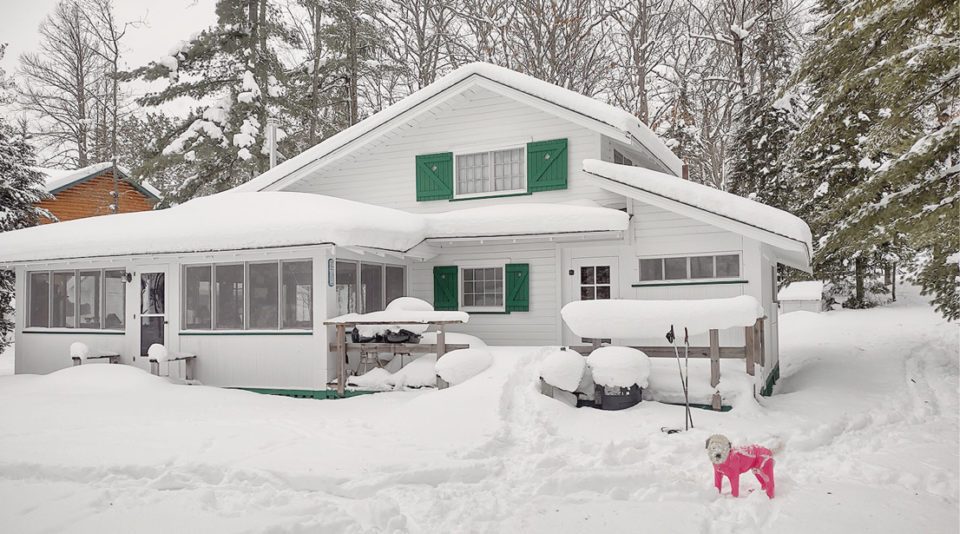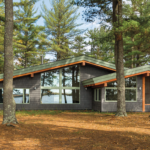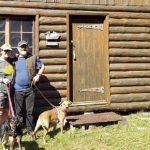Spring can be a hard time for homeowners on the North Shore. As the snow melts, the lakes thaw, and the waterfalls roar, all of that moisture has a tendency to find its way into unwanted places. On top of that, winter is often destructive, damaging roofs, walls and foundations in a way that makes them even more susceptible to encroaching spring moisture.
The key to spring maintenance is to be vigilant and to stay on top of small issues before they have a chance to become worse. It’s always best to reach out to local professionals for inspections and preventative maintenance rather than letting it get to the point where the problem has turned into an emergency.
To help prepare for the coming spring season, here are a few common maintenance issues to be on the lookout for.
Basement Flooding
Basements are a part of the home that is particularly prone to water damage, especially in the spring.
Even in older homes, there are ways to prepare and protect your basement from moisture. A functioning sump pump is essential for removing standing water from your basement in the event of a flood, but things like waterproof wall-coverings, vapor barriers, waterproof subfloors, and dehumidifiers can be just as important in keeping your basement livable.
If you have concerns about water damage in your basement, hiring a local contractor that specializes in basement waterproofing and foundation work is not a bad way to go. They will be able to accurately assess the underlying cause of the issue—whether it’s musty smells, damp walls, or spring flooding—and provide estimates for possible solutions.
DBS is a company based out of Duluth that specializes, among other things, in keeping basements “drier, brighter, and more comfortable.” Their website is easy to navigate, and on it you will find a list of solutions that they use to solve wet basement issues.
Mold
Mold is a common problem in homes, but it can be a challenging problem to resolve on your own. It is also a problem that you do not want to ignore—not only is mold bad for your home, exposure to mold and mold spores can be hazardous to your health.
It is important when dealing with mold to start by addressing the source of the problem. Before getting rid of the mold, make sure that you know how moisture is getting into your home, i.e., what caused the mold in the first place. Was it a ventilation issue? Was it seeping in from the outside? Was it the result of a plumbing issue?
The solution could be as simple as running a dehumidifier, or making sure gutters and downspouts are clear so that water can properly drain away from your home’s foundation. Regardless, if the underlying issue isn’t resolved when you remove the mold, it will likely reappear.
Removing mold can often be done by scrubbing with a simple detergent and water, or by using a specific mold cleaner with mold-killing properties. If the surface is too porous to scrub away the mold, you may need to consider replacing the contaminated material. Always use proper protective equipment like a mask and gloves when working closely with mold.
As always, there are contractors and professionals who specialize in mold prevention and remediation. Dryco Restoration Services is a business that offers mold remediation along the North Shore, and would be a solid resource if you have concerns about mold in your home.
Ice Dams
According to the University of Minnesota’s digital resource page on “Dealing with and Preventing Ice Dams,” an ice dam is “a ridge of ice that forms at the edge of a roof and prevents melting snow (water) from draining off the roof.”
Ice dams are problematic because water that is unable to properly drain off of a roof is likely to find its way inside the home, causing all sorts of damage to areas of the home that are meant to stay dry.
They are most often caused by insulation issues—i.e., heat escaping and melting snow on one part of the roof that flows to a cooler part of the roof where it then re-freezes into an ice dam—so long-term solutions involve making sure that the ceiling is sealed and that there is enough insulation between the roof and warm interior.
An immediate, simple solution, however, would be to keep your roof clear of snow. If there is no snow on the roof to melt and re-freeze, you might be able to prevent the dam from forming in the first place. However, always use caution when removing snow from a roof, both for your own safety and to prevent unnecessary damage to the roof.
Be Diligent!
Lastly, as the snow melts and exposes portions of your home that have been covered all winter long, it is a good idea to walk around and inspect each part of your home looking for signs of damage. It is much easier to repaint siding or reseal a deck than it is to replace rotting wood.
Use your senses to make sure everything looks as it should, and if something seems out of place or not as it should be, don’t hesitate to ask a professional.






